The motorcycle rider always has the option to switch between a low beam and a high beam.
But that doesn’t mean he should switch whenever it feels like and arbitrarily.
Rather, they should be used when required. Both beams have their own uses. And should be used when it makes sense to use.
In this post, we are going to discuss:
- What a low and a high beam is
- Using low beam
- Using high beam
- When NOT to use high beam
- Fog lights
Without further ado, let’s dive right in.
What is a low beam and a high beam?
A motorcycle headlight has two beams – low and high.
The low beam is designed as a spread beam where the light falls close to the motorcycle and is wide in the pattern.
The high beam is designed as the long-distance beam which is narrow in pattern but lights up the distance far away.
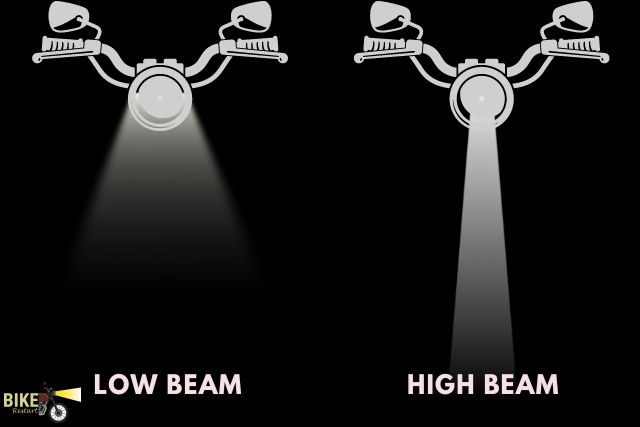
In many motorcycles, low beams are always ON.
Even if your motorcycle has no permanent light on, you should keep the low beam ON by default.
The high beam should be used cautiously and only when required. During nighttime riding – the high beam helps in illuminating the road ahead of you.
Having said that, do not go overboard with high beams. The light can be obstructive to the traffic coming towards you. So be cautious while using the high beam on your motorcycle.
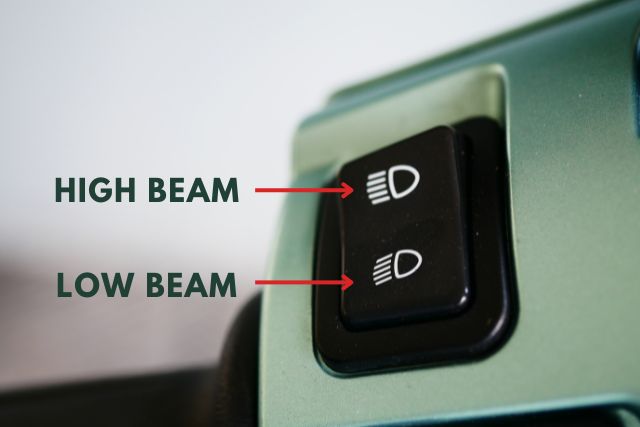
When to use the low beam?
First and foremost, the low beam on your motorcycle must be ON by default.
It does not matter what conditions you are riding and where you are riding – keep the low beam on.
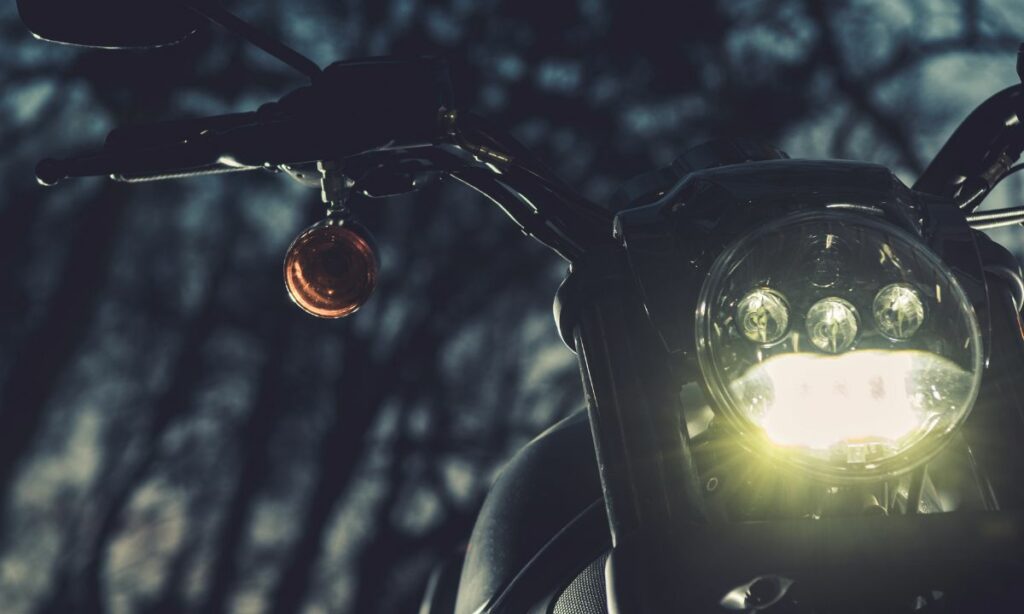
On many modern motorcycles, low beam light is ON by default. And there is no switch to turn it OFF.
But even if there is a low beam switch to turn it ON and OFF, consider keeping it ON by default always.
Second, use the low beam while traveling in traffic.
If you always keep your motorcycle low beam ON, this one doesn’t concern you. But for those who try to use the high beam in traffic – Don’t. Always use the low beam instead.
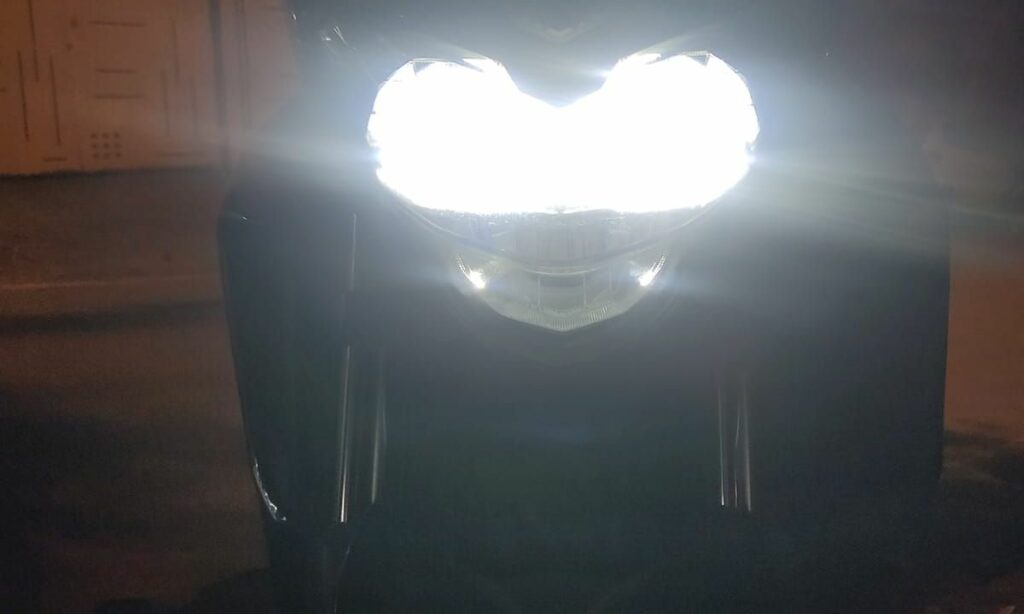
Third and last, use the low beam during the daytime completely.
Don’t even consider switching to the high beam during daytime riding. If you really think the high beam is necessary, consider using the pass light first.
Bottomline.
Use the low beam during daytime, while in traffic, and consider keeping it ON always by default.
When to use the high beam?
Let’s now discuss when to use a high beam then.
First and foremost, use the high beam if you want to – on low traffic low street light roads – to see the road more clearly.

During the nighttime, the path ahead might not be really visible. Especially if there aren’t enough street lights out there. The high beam comes into the picture at that time.
Again, do NOT use the high beam unnecessarily. Only when t is absolutely necessary and the road is difficult to see, switch on the high beam.
Second, the high beam is useful in rural areas at night. Apart from the low street lights, rural areas also comprise difficult roads, low visibility, and sometimes even wildlife.
In such cases, the rider has to rely on the high beam to look at the path ahead.
Be cautious though. The high beam can be obstructive to the vehicles coming toward you. Use it only when there is no or less traffic in these rural areas.

That’s it. These are the two main situations where the high beam comes in handy. Nighttime and rural roads.
Both times the rider can’t see the path ahead clearly since there aren’t enough street lights. The low beam only lights up a short distance.
Using a high beam becomes necessary in these conditions.
When NOT to use the high beam
Now that we know when to use the high beam, let’s discuss when NOT to use the high beam:
- High-traffic roads: If there are a large number of vehicles coming from the opposite direction, it is best to avoid using the high beam. The high-intensity light can dazzle the vehicles moving in the opposite direction.
- In foggy weather: Using the high beam during fog and rains is counter-helpful. The high-intensity beam diffuses in such weather conditions and actually reduces visibility for the rider.
- To oncoming vehicles: Never use the high beam when there are vehicles coming towards you. The high beam on your bike will be dazzling and obstructive to the vehicles traveling in the opposite direction.
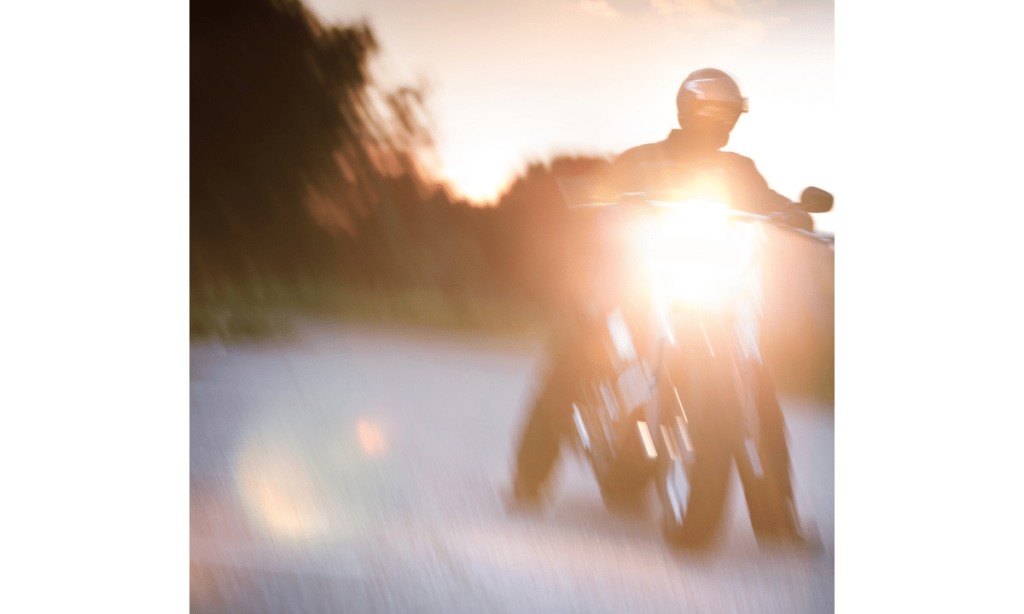
Low beam vs High beam – differences
Here is the crisp version of how low beam and high beam are different from each other:
| Parameter | Low beam | High beam |
|---|---|---|
| Light intensity | Low intensity beam | High intensity beam |
| Range | Short range illumination | Long range illumination |
| Usage caution | Can be used all the time and everywhere | Should be used cautiously |
| To be used in | Almost all conditions | Nighttime & low street light areas; In low traffic |
| Switching on | ON by default | On for brief period of time only |
In short, high beam are bright and has powerful intensity. But they also blind other vehicles coming in opposite direction.
That’s why the high beam should be used with caution. And even if switched on, should not be kept on for longer periods.
A note on fog lights
In foggy weather conditions, both the high beam and the low beam can get ineffective.
The beams diffuse or don’t have good visibility. As a result, the rider fails to see ahead properly in such conditions.
That’s where the fog lights fit in.
Fog lights, also called hazard lights, are installed closer to the ground on the motorcycle to provide better visibility in foggy weather conditions.
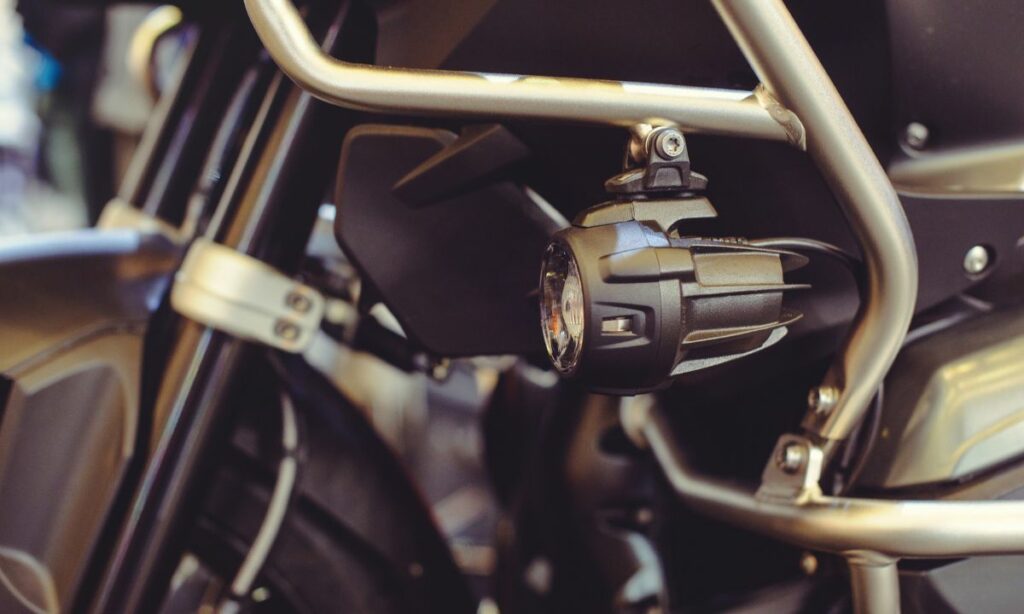
Few modern motorcycle models have fog lights attached to them from the manufacturer’s end. However, this is not a universal feature available in all motorcycle models.
In case your motorcycle does not have hazard lights or fog lights attached at the front end, consider installing them. This is specifically vital for riders living in places that have foggy weather most of the winter.
Hazard lights or fog lights are super helpful if your location has foggy weather throughout the winter season.
Fog lights are specifically designed to provide extra beams to the motorcycle rider. However, if you are installing fog lights, you need to check the legalities of installing auxiliary lights in your area.
Depending on the area you live in, there might be regulations specifying the maximum distance the light can shine, the maximum height from the floor wherein the lights can be installed etc.
Also, you need to look into the power requirements of the fog lights before installing. If the fog lights drain too much power than your motorcycle can handle, then it would be a mismatched installation.
Make sure to keep in mind these requirements before you go for installing auxiliary fog lights in your motorcycle.
Before you go…
Here are a few more posts on motorcycle lights that might interest you:
